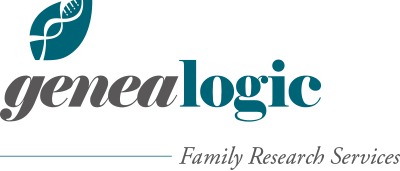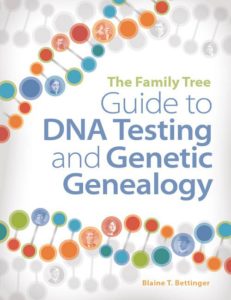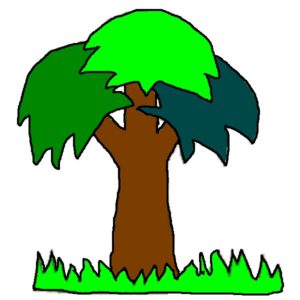As I kick off 2017, I am working on (and waiting on) quite a number of DNA projects. Here’s a rundown. I hope these provide some ideas about different ways you might be able to use DNA to answer your own genealogical questions.
- A client and I are waiting on the AncestryDNA test results of her brother as we search for information about their biological grandparents. Their now-deceased father was left at an orphanage as a newborn. While the ethnicity breakdown is somewhat useful, what we’re really looking for are relatively close cousins on their paternal side.
- My dad and I are awaiting his AncestryDNA results, which he sent in before Christmas. I have spent years building out my family tree. It was a difficult “loss” when I found out my dad was not my biological father and that his ancestors were not also my ancestors, at least not genetically. (I’ve written elsewhere about how I have embraced having three full branches on my family tree.) So I’m excited to see the results for a family that, as it turned out, my own DNA couldn’t tell me anything about. My dad’s family tree is pretty interesting. The top half—his father’s ancestors—were all of Czech origin, but their surnames suggest a mix of Slavic, German (Bernklau, Fitzthum), and even Italian (Filipi) ancestry. The bottom half—his mother’s ancestors—were a muddled mix of people who traced their roots back through the Midwest to the Mid-Atlantic. Before the branches converged in Illinois and Nebraska, they were English settlers in New Jersey, German and Scots-Irish settlers in Pennsylvania and Ohio, Swedes from the New Sweden colony, Quakers around Philadelphia, and a mix of English, Scottish, Welsh, and French Huguenot settlers in colonial Maryland.
- Sometime in the next couple weeks, I will be sitting down with my 91-year-old maternal grandmother to talk about her family history. I am hoping I can convince her to take a DNA test. (I won’t force her if she’s uncomfortable with the idea.) It’s always good to test the oldest people in your family if you can. My grandmother’s ancestry is fully Irish. Her fore-bearers came from all corners of the island: Mayo, Kerry, Laois, Wicklow, and Derry, plus a couple lines whose specific origin in Ireland I am still researching. I am hoping the cousin matches will help me prove a couple relationships here in the U.S. and back in Ireland.
- Last week I met with my wife’s uncle. While we were researching my wife’s maternal family a couple years ago, we discovered that her great-grandfather Edward Van Loy had been born out-of-wedlock in the city of Leiden in the Netherlands. The document recording the marriage of Edward’s mother Theresia Gedaan to Alphonsus Van Loy includes a section in which Alphonsus agreed to recognize Edward and his sister Seraphina (who had also been born before the marriage) as his own children. My wife’s uncle agreed to take a Y-chromosome test to see if we can identify a probable surname for Edward’s biological father (or, less likely, confirm that Alphonsus Van Loy was in fact the father). We ordered the 111-marker test from FamilyTreeDNA—the most detailed one—to give us the clearest picture right from the start.
-

Angelique Gobin Gervais was born around 1830 in the Red River Settlement and lived to be about 95 years old. At her death in 1925, people believed she was even older, about 105 or 106. This photograph of her was originally posted on Ancestry.com by another decedent. We must always be wary of judging race by appearance alone, but Angelique’s facial appearance at least suggested the possibility of Native American ancestry. Documentary evidence leads to the conclusion that one of my ancestors was a Native American woman who lived near the Red River of the North around 1800. She was possibly a member of either the Ojibwe or Assiboine tribe. I’m too many generations removed from her for Native American DNA to appear in my ethnicity chart. Her genes simply did not survive eight generations of random genetic recombination. I descend from the woman’s mixed-blood daughter Louise Godon and granddaughter Angelique Gobin. Unfortunately, the next person in the line between us is a man. In hopes of proving the Native American connection, I have reached out to a couple cousins who descend from Angelique or Louise through entirely female lines. I am encouraging them to take a mitochondrial DNA test. If everything is as expected, their mitochondrial DNA should come from one of the distinctive Native American haplogroups.
I will provide some short updates as results come in.

 The Family Tree Guide to DNA Testing and Genetic Genealogy is as good a book as one could imagine for this market. Sure, some of its content will be out-of-date by next year, but it succeeds in every aspect Bettinger and the publisher could control. Everyone from beginners to professional genealogists will find value in it.
The Family Tree Guide to DNA Testing and Genetic Genealogy is as good a book as one could imagine for this market. Sure, some of its content will be out-of-date by next year, but it succeeds in every aspect Bettinger and the publisher could control. Everyone from beginners to professional genealogists will find value in it.